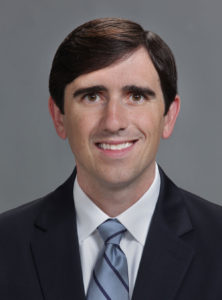Meniscus Repair Surgeon

Are you an athlete who participates in sports that involve running and jumping? If so, you may be at risk of tearing your meniscus. A meniscus tear can occur due to a traumatic event or degeneration. Meniscus surgeon, Dr. Robert Boykin provides diagnosis and both surgical and nonsurgical treatment options for patients in Asheville who need meniscus repair surgery. Contact Dr. Boykin’s team today!
What is the Meniscus?
The knee joint is the area of the leg where the thighbone (femur) meets the shinbone (tibia). The knee is stabilized primarily by a series of ligaments which serve as restraints to control motion of the knee. The ends of each of the bones are capped by a type of cartilage called articular cartilage, which allows for smooth motion of the knee. Inside the knee between the bones there are also two areas of C-shaped cartilage which are referred to as the “menisci”. There is a meniscus on both the inner and outer aspect of the knee. This cartilage serves as a shock absorber since very large amounts of force are transmitted across the knee with walking, running, going up and down stairs, squatting, or performing sports. The menisci are extremely important to distribute the load across the knee and protect the articular cartilage. The menisci also serve as secondary stabilizers of the knee to assist the ligaments. If a meniscus sustains a significant tear, it loses its ability to function. Over time this will lead to degradation and wear of the articular cartilage, called arthritis. Knee surgeon Dr. Boykin specializes in treating meniscus injuries for patients in Asheville, Arden, Fletcher and surrounding communities.
How Do I Know if I Have a Menicus Tear?
The symptoms of a meniscus tear include pain on the inside or outside of the knee, catching, clicking, locking, and tenderness directly over the joint line of the knee. A tear can often be diagnosed by a patient’s symptoms and physical exam. In many cases a MRI scan is used to confirm the diagnosis and visualize the meniscus. Certain small tears can be treated with physical therapy and non-operative measures. Surgery is typically recommended for larger tears, those with mechanical symptoms such as locking, and those that have failed non-operative management. The type of surgery depends on the type and location of the meniscus tear, associated injuries, and patient age and activity goals.
What is Meniscus Repair Surgery?
If the meniscus has a small symptomatic tear, one that is shredded beyond repair, or a tear in the inner third of the meniscus, it is treated by removing the area of the tear. This is called a partial meniscectomy, and Dr. Boykin will take great care to only remove the involved part of the tear and leave as much of the healthy meniscus as possible. This surgery is performed arthroscopically using a camera to visualize the tear and check the knee for any other damage. Small incisions are made to insert specialized instruments to carefully remove the damaged tissue. The remaining meniscus is smoothed down to prevent further tearing. This procedure is highly successful in alleviating symptoms associated with a meniscal tear.
In larger tears that are able to be fixed and those tears in the outer two thirds of the meniscus an attempt is made to repair damaged tissue and get the native meniscus tissue to heal. This is performed with a combination arthroscopic and open procedure, using a camera and small instruments in the knee, while making a small open incision on either the inside or outside of the knee to complete the fixation. Strong stitches are placed through the tear to bring the tissue back together and complete the repair. The stitches are then tied to secure the meniscus.
Recovery Following Meniscus Surgery
For a partial meniscectomy procedure, the patient is allowed to weight-bear as tolerated after the surgery. Physical therapy is started immediately for control of swelling and to regain motion and strength. A brace is not usually required and patients need crutches for 1-2 weeks. After a meniscal repair, the knee must be protected to allow the meniscus to heal. The patient is placed in a brace and motion is started immediately but usually in a restricted range for the first two weeks. Weight bearing is protected on crutches for two weeks followed by full weight bearing in the brace, which is worn for a total of six weeks. The typical return to jogging is around 4 months, with sports at 5-6 months.
To learn more about mensical injuries of the knee, or for additional information on meniscus repairs or meniscus surgery, please contact Dr. Robert Boykin, orthopedic knee surgeon treating patients in Asheville, Arden, Fletcher and surrounding North Carolina communities.
